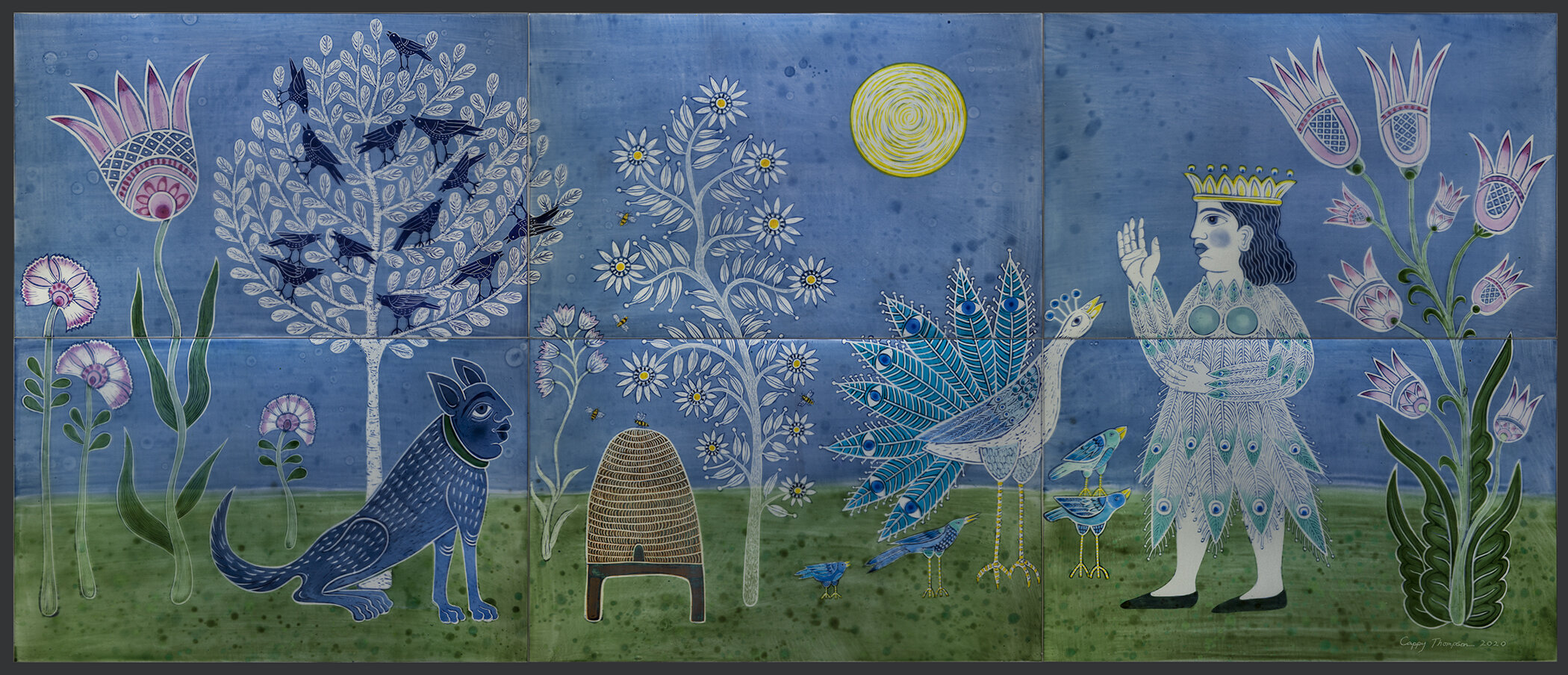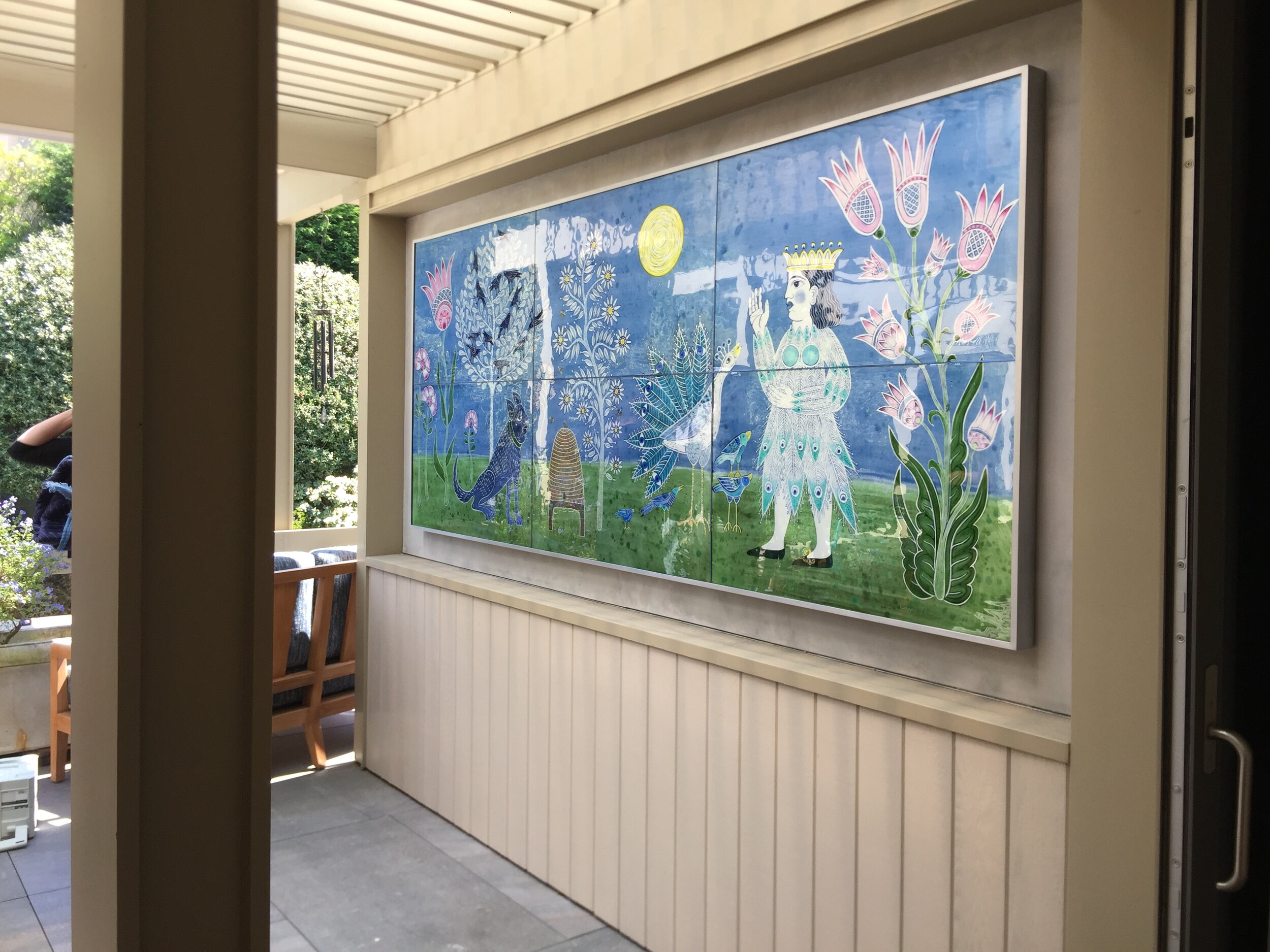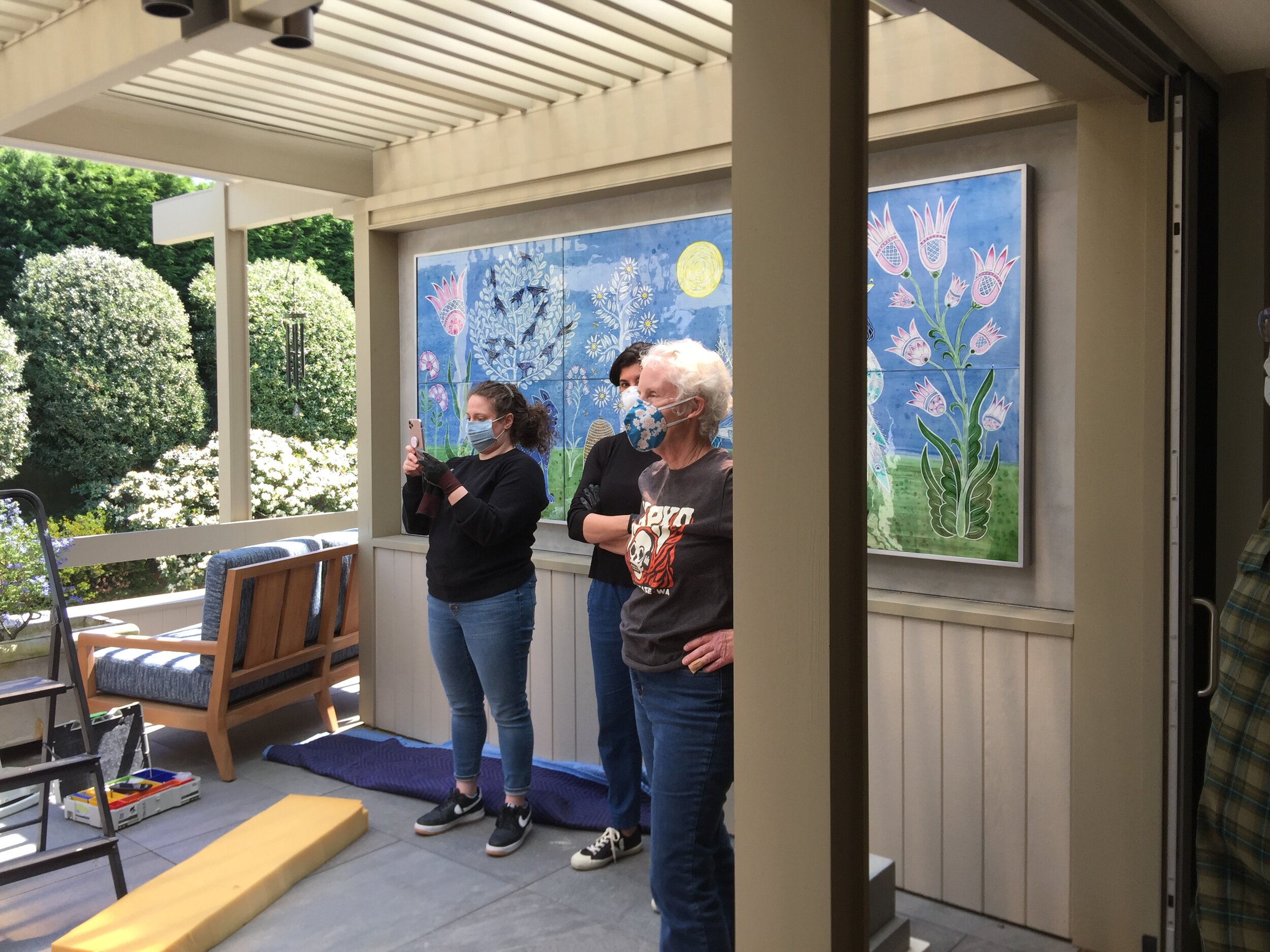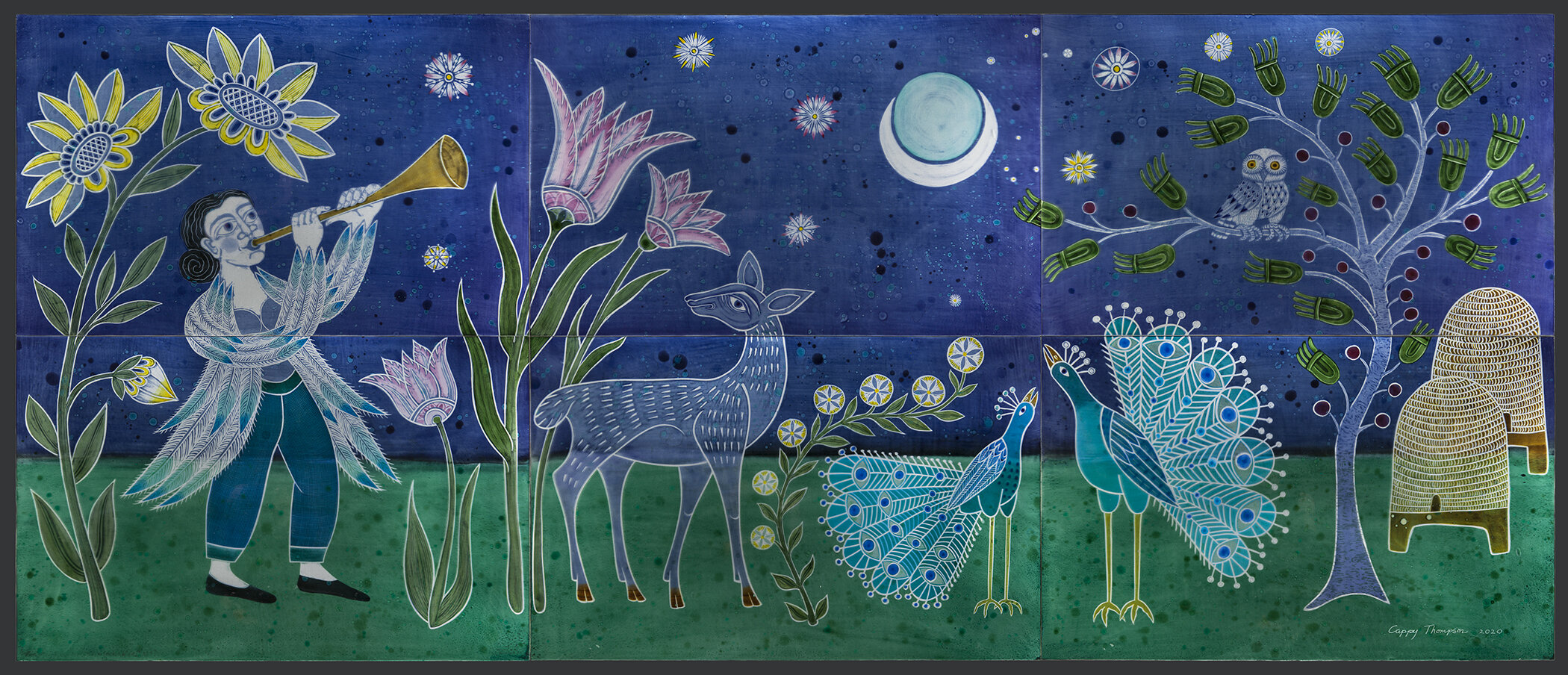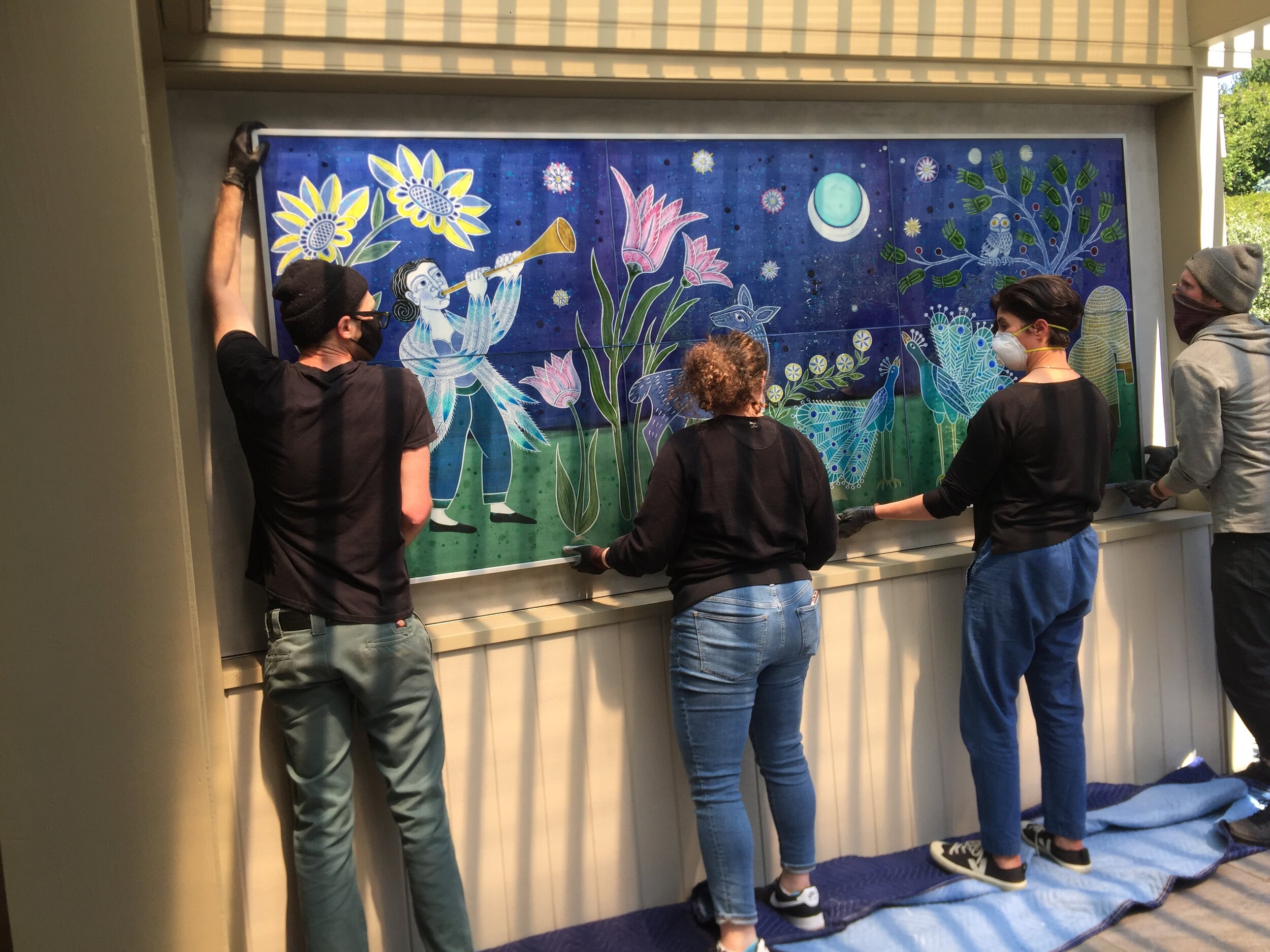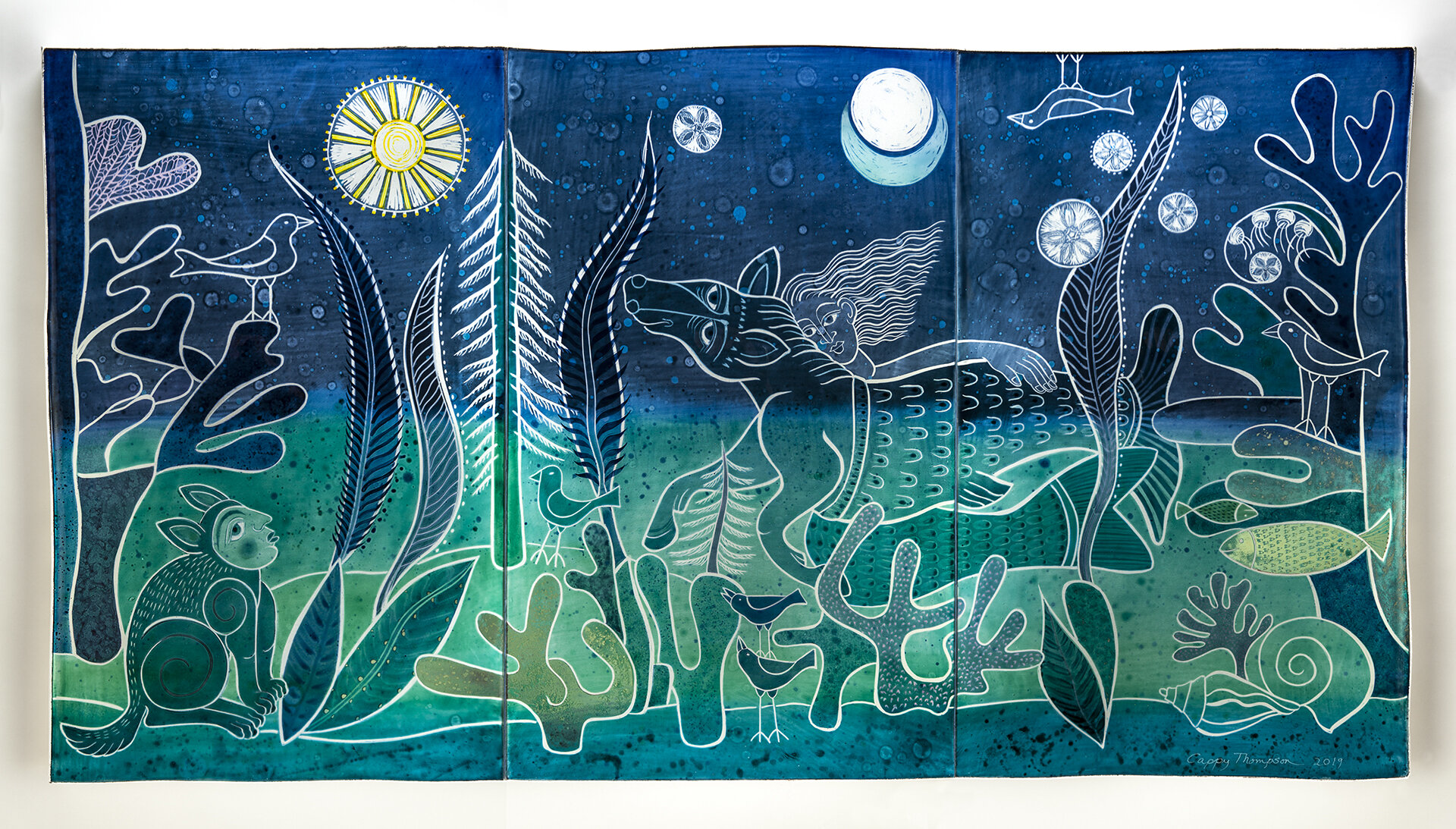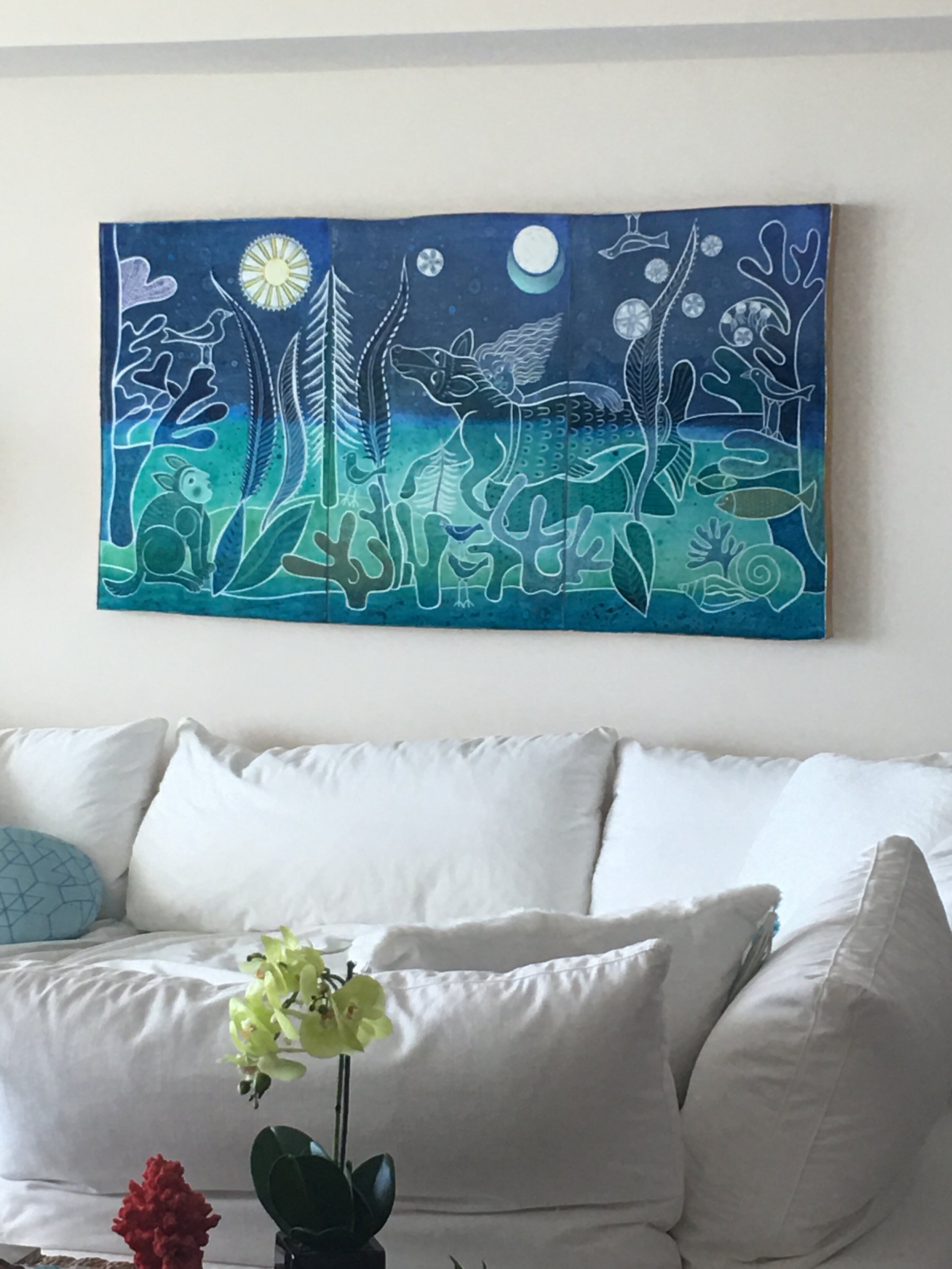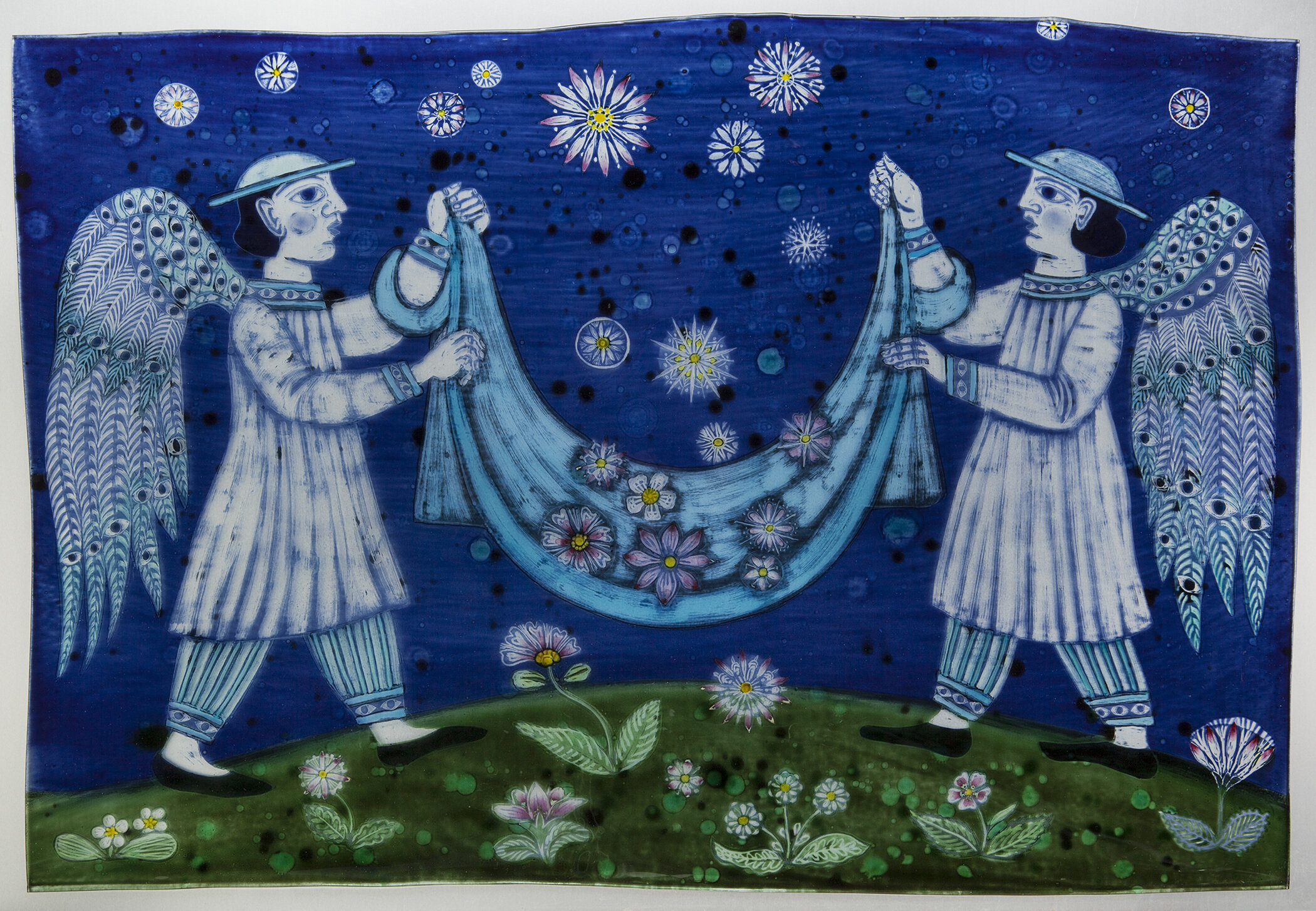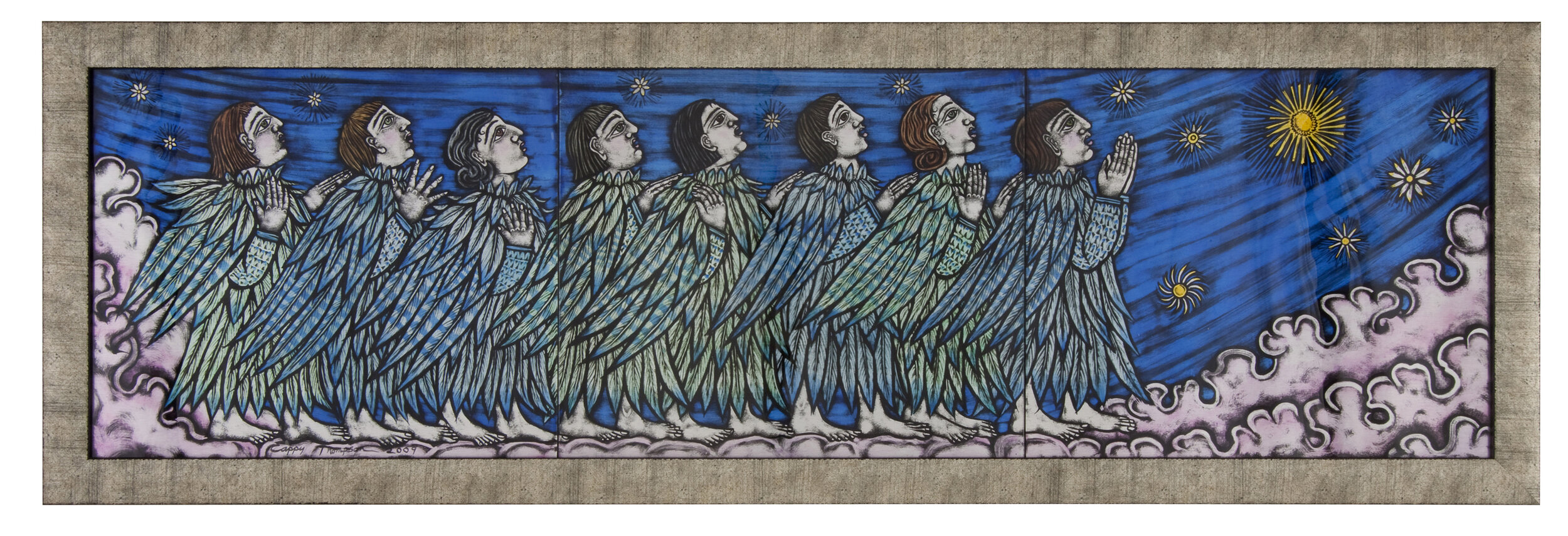A mindful approach…
When the pandemic first hit and the world shut down, Cappy Thompson was quite busy bringing some big projects to completion. Her work carried on relatively uninterrupted and her personal life remained comparatively safe, but the magnitude of the upheaval around her did not go unnoticed. Witnessing the global health crisis and listening to the protests and conversations on social justice inequities felt like a real moment of reckoning for Thompson, secure as she is in the big and beautiful fourth floor artists co-op in Seattle where she has lived and worked for 32 years. Realizing her privilege made her think deeply about the relevance of what she does, and she is grateful for the opportunity that 2020 gave her to be thoughtful about her life and work.
Cappy Thompson invites us into her studio for a virtual tour.
In the quiet days of last year, she was reminded of how much pleasure she derives from her space, which brims with cheerful and soulful works of art and decorative pieces filled with personal meaning. Sometimes she feels like she is in the company of friends, there is so much life to the objects which she surrounds herself with. She also visits her 97-year-old mother, Virginia, one week each month in her home on Washington’s Key Peninsula, with a beautiful view overlooking the Puget Sound and Mt. Rainier. Thompson truly cherishes these weeks of physical and emotional respite with her mom, an artist who she describes as a kindred spirit.
Above: a studio tour with Cappy Thompson.
Below: The view from Virginia Thompson’s home, on the Key Peninsula in Washington.
When Thompson was in her 20s thinking about what do with her life, she was interested in both psychology and art. It followed, then, that when she started to approach the discipline of art professionally, she saw it as a tool for self-exploration. She has found the journey of self-discovery through art extremely rewarding and is attracted to the idea that she will never come to the bottom of it. For her, art is an intuitive process. She often turns to her collection of second-hand books, leafing through until something pops out as inspiration. She thinks about ideas for a while, sits and sketches in an act of visual journaling until something emerges.
Secret Garden, 2013
Vitreous enamels reverse painted on blown glass, 15.5 x 13 x 5.5”
Moon, 2013
Vitreous enamels reverse painted on blown glass, 16 x 9 x 6.25”
She has written that “as a narrative painter, the issue has always been content. The issue wasn’t glass, the material I chose some 37 years ago. Nor was it the painting technique—grisaille or gray-tonal painting—that I taught myself to use. My work—which spans several decades and a variety of scales from the intimate to the monumental—has always been driven by content.” She reads herself through her work, and it has become more and more important to her over the years to try to express the relationship between her physical and spiritual life, between her inner self and the realm around her. Her exquisitely painted vases and panels appropriate images from art history, myth, fables, global culture, cosmology, nature, and religion to tell very personal stories.
Of Secret Garden, she wrote:
I had a dream years ago where I met a woman in an open-air studio and it was filled with objects and animals of a sacred nature. She invited me in and we talked about art. When I woke, I recognized myself as both the woman and the guest. The animal in the garden is my animal nature, the desire aspect of my being.
And of the piece Moon:
I love images from Arab and Indian painting in which the moon is anthropomorphized, a figure sitting cross-legged gazing down from the heavens. Here I do my own version of her as a beauty, face framed with a lace collar and gown embroidered with the seasons. The reverse side of the vessel pictures the stars of the Pleiades.
Even though content is paramount, Thompson approaches the physical act of painting with dedication. She sees painting as a practice, a muscle she continues to flex even during the pandemic to keep it toned. She has painted on blown glass vessels, done collaborative painted work with glass and ceramics, and for the last few years has painted with transparent enamel colors on mouthblown, sheets of glass (which retain an organic edge).
A mindful approach to life and work is nothing new to Thompson, who has studied different enlightenment philosophies, striven to cultivate a deeper understanding of herself and her surroundings, and sought a balance between her material and spiritual world. In college, she became interested in world religions, looking not just at Christianity but at Sufism, Hinduism, Paganism, Judaism, Buddhism, and Islam (she was especially drawn to religious imagery, which she describes as “created before the invention of ‘art’ as we know it—before painters controlled the content of their work. These works were decreed by religious and political authorities to depict the magnificence and beauty of the natural and divine order. What I loved was the naïve naturalism and devout simplicity of that period—like the folk art of any period.”
Thompson studied the work of Armenian philosopher George Gurdjieff (1855-1949), then spent almost a decade studying A.H. Almaas (b. 1944) and his method of self-development which “leads to a deepening realization of the fullness of the human being—a being who experientially embraces and expresses the totality of the cosmos in all its physical and spiritual dimensions.” She then found the work of Anthroposophist Rudolf Steiner (1861-1925), who believed that the spiritual world can be accessible to human understanding. In his book How to Know Higher Worlds (1993), Steiner wrote that:
“It is imperative to extirpate the idea that any fantastic, mysterious practices are required for the attainment of higher knowledge. It must be clearly realized that a start has to be made with the thoughts and feelings with which we continually live, and that these feelings and thoughts must merely be given a new direction. Everyone must say to himself: ‘In my own world of thought and feeling the deepest mysteries lie hidden, only hitherto I have been unable to perceive them’.”
Though Thompson has only studied Steiner for the past ten years, when she looks back on her work, even back to the 1970s, she sees that these themes were resonant in her even before she could define them.
Thompson is going to be 70 next January, and the last few years have brought some trials, including the loss a few years ago of her beloved husband. But she is filled with gratitude for the fact there is never a dull moment in a life well lived, well examined, and well loved. There is a captivating allure to her paintings on glass, which so honestly and deeply explore her personal dreams and experiences. This is because, along with their jewel-like colors and visually arresting motifs, they illuminate themes of self-discovery, spiritual exploration, and man’s yearning to understand his place in the universe which echo within each of us.
Video: Large Scale Installation at Seattle - Tacoma airport.
Dreaming of Spirit Animals features the work of Pacific Northwest artist, Cappy Thompson and her process of creating a large scale public art piece (the largest painted glass window in existence)for the Sea-Tac airport addition. This excerpt from the documentary explores Thompson’s unique relationship to the function of narrative and autobiography in glass art as well as her interest in dreams and mythology and her methods of incorporating diverse inspirations for her glass work. 2 Minutes
Recent Residential Commissions
Day Garden, Night Garden, and Ocean Garden
Available Works by Cappy Thompson
Click on image to enlarge.
About the Artist
“I started by designing and painting glass panels based on the narrative content of mythology, fables and folktales, drawn in oblique projection, with transparent jewel-like colors. Later I painted similar narratives on glass vessels.
About fifteen years ago I found myself moving away from mythological narrative and toward compositions on vessels that drew upon images and themes from my personal life. Elements would drift up and assemble into picture-poems that seemed to have a life of their own.
I began to understand these works as reflections of the spiritual and psychological issues in my life. I painted members of my family and myself in a kind of autobiographical fantasy, working with the mythopoetic materials of my life. I cast myself into scenes from various spiritual traditions.
This began an autobiographical exploration of world culture and spirituality that continues to the present.
I see now, after more than three decades of work, that I am like those medieval painters striving to express magnificence and beauty. But my expression focuses on the human experience of goodness, of hope and of love.”





